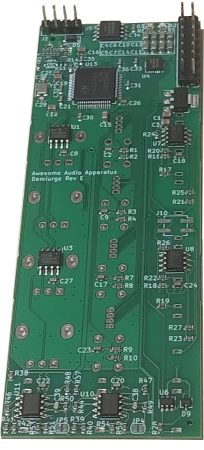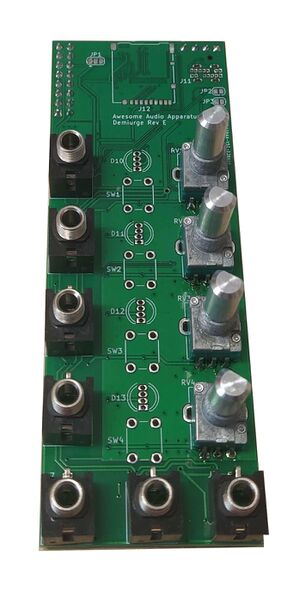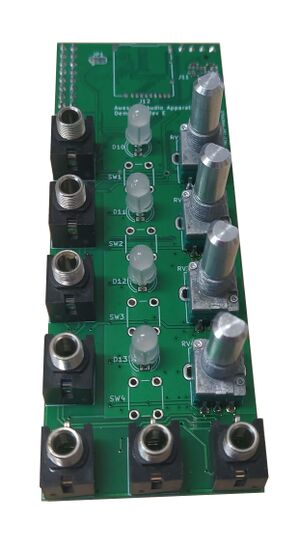Difference between revisions of "Demiurge 1"
Jump to navigation
Jump to search
| Line 15: | Line 15: | ||
* Optional USB-C connector (very difficult to solder) | * Optional USB-C connector (very difficult to solder) | ||
== Software == | == Software == | ||
| − | * [[ | + | * [[Demiurge Sound Processing Engine]] |
| − | * [[Demiurge | + | * [[Demiurge/Bare Metal Programming the CH32V307 hardware|Bare Metal Programming the CH32V307 hardware]] |
=== Schematics === | === Schematics === | ||
| Line 30: | Line 30: | ||
[[File:demiurge1-RevE-3.jpg|300px]] | [[File:demiurge1-RevE-3.jpg|300px]] | ||
</div> | </div> | ||
| − | |||
== Miscellaneous Links == | == Miscellaneous Links == | ||
Revision as of 10:41, 20 August 2022
The idea about the Demiurge emerged back in 2019 and the first prototype was developed around the ESP32 MCU. During initial testing of this prototype we concluded that the SDK of the ESP32 was not mature enough to handle the real time audio stuff. Because of that, the design was modified to use a STM32F405 MCU. Unfortunately, around the time we were ready to start selling these, the STM32F405 disappeared from the market completely.
Hardware
- Two analog outputs, DC coupled to be equally suitable for audio, CV and Gate functionality.
- Four analog inputs, also DC coupled for the same reasons.
- One digital input/output for Gate or Trig functionality.
- Four Potentiometers
- Four RGB LEDs
- Four push buttons
- Power over 16-pin standard Eurorack power header
- Programming header, with SWDIO/SWCLK (flashing) and USART (debugging tty)
- Optional SDcard connector
- Optional USB-C connector (very difficult to solder)



